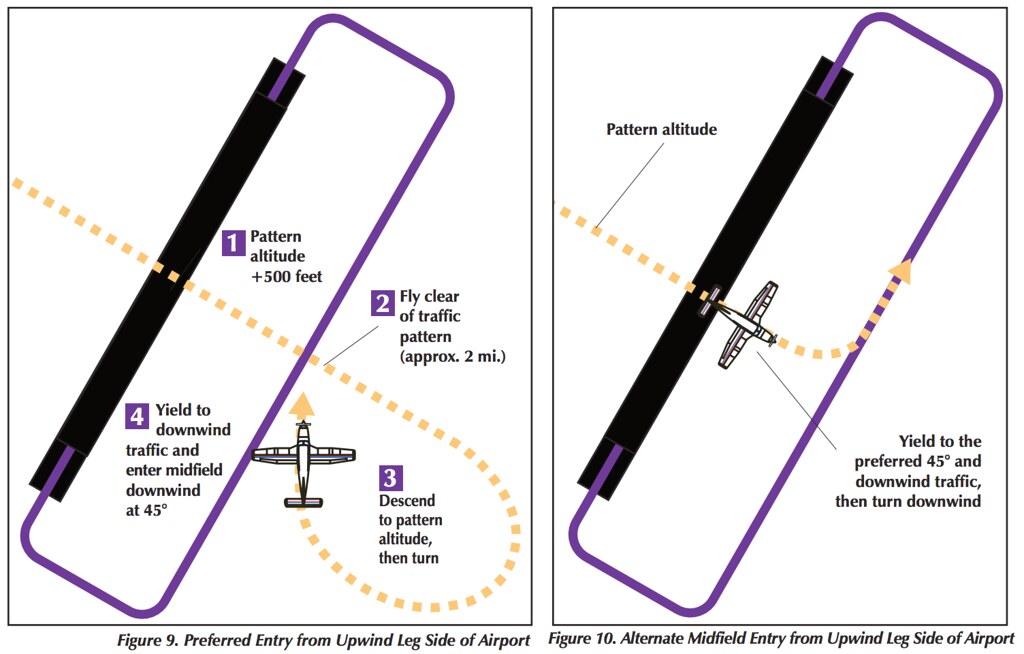Van Johnston
Pattern Altitude
I've always overflown non-towered airports 500' above the pattern before going wide and descending so as to enter midfield downwind at about a 45° angle.
This is the way I was taught (in 1986). The rationale -- back then -- is that you overfly at +500 to find the wind sock to see which runway is in use then proceed in whatever direction necessary (including potentially a 180) to set up for the descending 45 degree entry. I guess the advent of AWOS makes that rationale obsolete at AWOS-equipped fields, but overflying at +500 still seems safer to me.


